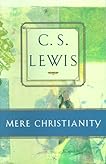Rather than thinking, "Hmm, that sounds good - maybe I should eat lunch at Applebee's," I, being a math geek, thought, "How many items must there be in order for it to be correctly and reasonably described as 'over 75' combinations?"
Starting with the idea that you could choose from the same pool twice, the number of combinations would seem to be some number squared. For instance, if you had 9 choices for the first item, and 9 for the second item, you might think you had 81 possible combinations. Except that order doesn't matter (choosing french onion soup + shrimp salad is the same as choosing shrimp salad + french onion soup). So 9 items would actually give us 45 choices using this model (assuming I'm calculating correctly). And 12 items would give us 78 choices. So perhaps there are 12 different items.
But this assumes you might order the same thing twice - say, two orders of BBQ Pulled Pork sliders. And that doesn't seem likely. If we instead have to choose two different items, again with order not mattering, then it becomes a combination. Here, 13 items would give us 78 choices, which you'd probably describe as "more than 75."
So, with my guess that the menu has 13 choices, I went to look at the actual menu:

It seems to me that there are in fact 14 different items, which means 91 combinations of 2. But you wouldn't describe 91 as "over 75" (although it is, of course).
Perhaps they are thinking that you would order any two items, but not two of the same item, and not two different sliders. In that case, you would take our 91 choices and subtract the 6 that involve two sliders, leaving 85 choices. If you further assume that ordering two soups would be strange, we could subtract those 6 combos as well, leaving 79 choices, which is a reasonable value for "more than 75."
Perhaps the Applebee's folks reasoned this all out. Or maybe the menu originally had 13 items (giving us the straightforward "13 choose 2" calculation of 78), and one was added at the last minute, after they had already designed the ad campaign.





















2 comments:
This reminds me of how the materials for the state park system usually said something like "Over 100 state parks" or "Over 90 state parks" or whatever (depending on what the reasonable figure was). In this case, it was less driven by rounding to make the number easier for the audience to comprehend or because the number had a tendency to change quickly, but because it was actually difficult to count the number of parks at any given time. This seems utterly idiotic, and yet was true, not just based on what definition of "state park" you used (do historic sites count? do state natural areas?) but because individual sites might be in a sort of hazy situation legally and other things that I have forgotten but that surprised me at the time.
An example of a hazy legal situation would be a park that is being transferred from the state to another entity like a county or city.
Post a Comment